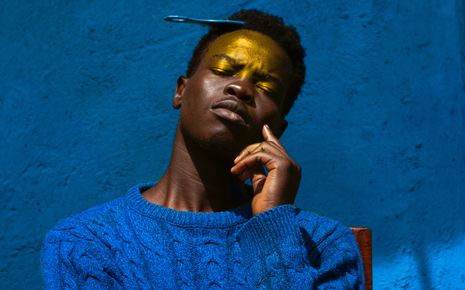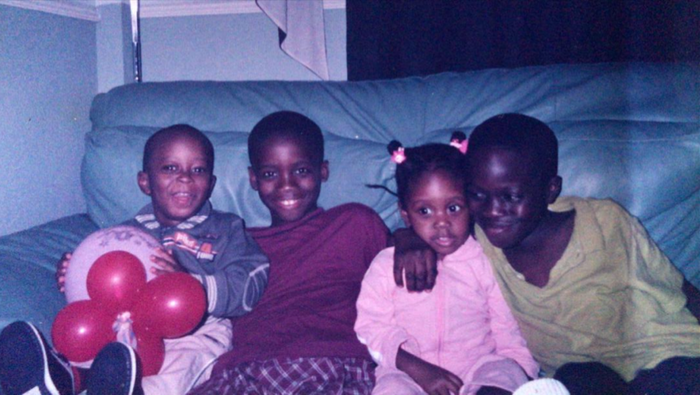My blackness is an existence, not a performance
‘The reality is that to accept blackness as a monolith is to not accept it at all,’ writes Zoe Olawore on the concept of blackness

I tilted my head in confusion – even horror – when my best friend told me that she likes to dress alternatively. She listened to Melanie Martinez. She did not view herself as the next Malcolm X. At thirteen years old It was hard to understand how black people could enjoy things I categorised and dismissed as white. I would silently judge black girls whose hair was straightened, put into a ‘messy bun’ or had braids vibrantly coloured in a way that aunties would shake their heads at. When I saw black boys with overgrown hair that resembled an “accidental afro,” I quickly concluded that their friends were all white. Whether I was right or not is another topic. But in all these situations one thing was for sure: I hastily concluded that they were ‘whitewashed.’
“We have a simplistic, one-dimensional idea of who a black person should be”
The term ‘whitewashed’ describes black people and people of colour who have assimilated with seemingly western attitudes or appearances. For example, the Southern American black girl online whose guilty pleasure is country music is dismissed as whitewashed. Or the black boy who loves anime and gamer culture (before its recent popularity) is perceived as less black. Often when the term whitewashed is used (solely based on appearance), it is used to simply describe an expression of blackness that we are not well-acquainted with. Blackness is typically expected in a particular form. In our minds, we have a simplistic, one-dimensional idea of who a black person should be. The way they should talk, dress, do their hair, and socialise are all pre-decided (and wrongly decided). When a black person falls short of this standard they may be subject to sneers and considered ‘less black’.
The irony is that I was not exempt from this standard. And the judgment was more internal than external, but it became a source of major insecurity for me. From Year 8 onwards the expectations of black girls morphed into something I no longer was. The pressure to perform well academically from my teachers and parents meant that less effort went into my assimilation with my own community. I could not fit inside this mould which I so comfortably sat in.
“I saw myself as outside the circle of what it means to be black”
My social skills online and offline decreased – I learned quiet introspectiveness came more naturally to me – yet black girls were pressured to be people’s source of entertainment. A black girl’s social value was influenced by how well they catered to their audience around them as daily interactions were judged as a performance. While I continued doing braids and cornrows, suddenly wigs and frontals were part of the beauty standard. And while my friends were miles ahead of me in terms of their makeup skills, I was still watching videos about how to wear setting powder without flashback. In the end, I felt isolated from the standard that I used to find safety in. So here I was in this limbo. While I felt connected to my race and community because these were things, I was proud of, internally I saw myself as outside the circle of what it means to be black. Blackness was something I had to strive for rather than something to live in. The ‘learning’ process was only more alienating: before my 16th birthday, I spent time in lessons, during my lunch break, and on my journey home, planning the wig I would wear. I wanted my hair to blend in with the relevant trends and standards concerning black girls’ hair. After I got my hair done a few days before my birthday I stared in the mirror to find a wig that looked more like the twins in ‘White Chicks’ than the black, female influencers I tried to learn from.
So, my attempts were futile. While it was easy to reduce blackness to a specific form – ignoring the variety within blackness – to judge people against it was much harder to live up to this standard. This difficulty, I realise now, was an indicator that these uncoded guidelines around what it means to be black were both artificial and false. Blackness is often underlined by a common experience, struggle, and sense of community but that does not mean that – and I did not realise this – that we are the same.
It was and remains racist to accept the individuality that exists within whiteness yet only ‘accept’ blackness as a monolith. The reality is that to accept blackness as a monolith is to not accept it at all.
 News / Cambridge academics stand out in King’s 2026 Honours List2 January 2026
News / Cambridge academics stand out in King’s 2026 Honours List2 January 2026 Interviews / You don’t need to peak at Cambridge, says Robin Harding31 December 2025
Interviews / You don’t need to peak at Cambridge, says Robin Harding31 December 2025 Comment / What happened to men at Cambridge?31 December 2025
Comment / What happened to men at Cambridge?31 December 2025 Features / “It’s a momentary expression of rage”: reforming democracy from Cambridge4 January 2026
Features / “It’s a momentary expression of rage”: reforming democracy from Cambridge4 January 2026 News / AstraZeneca sues for £32 million over faulty construction at Cambridge Campus31 December 2025
News / AstraZeneca sues for £32 million over faulty construction at Cambridge Campus31 December 2025











